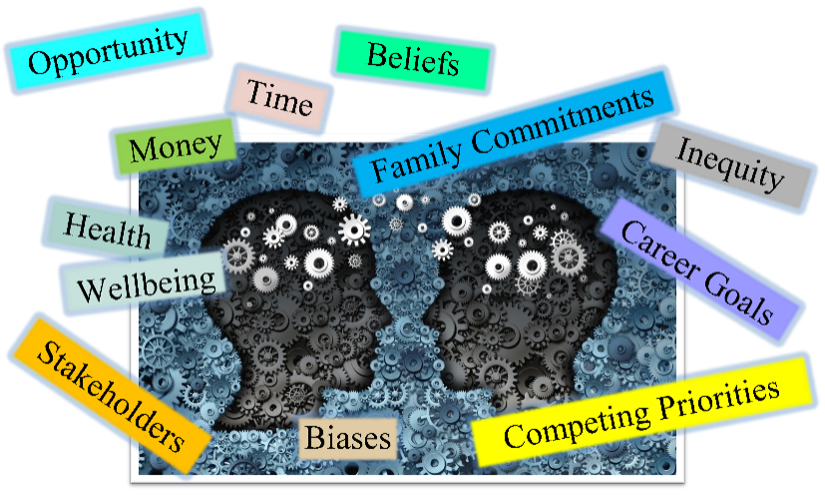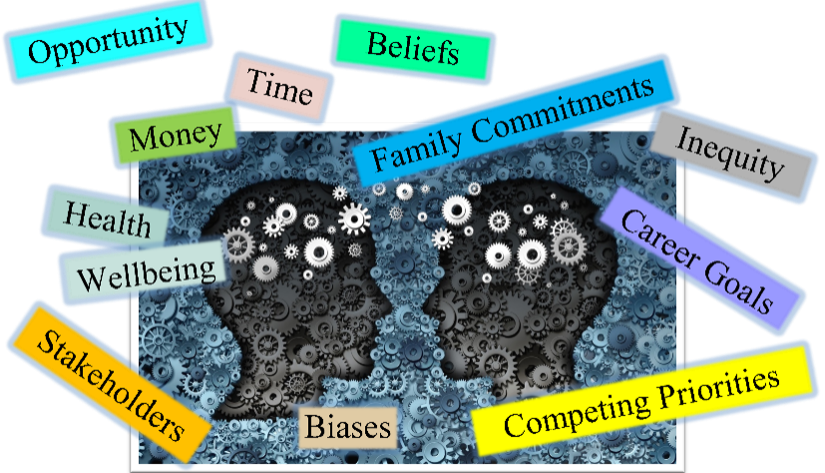Each time we make a decision, there are multiple considerations involved. These include other people, time, money, logistics, resources, emotions, biases, energy, physical wellness, and more. Sometimes these considerations are voiced and other times they are simply underlying reasons. Sometimes a decision is imposed and sometimes we make it because of urgency before considering the importance or relevance.

Decision making can be approached in different ways:
- Prioritize Fast versus Slow – when the circumstances are familiar, quick decisions can be an easy default. Some simply prefer quick decision-making because they are fast paced. When the decision is about something new, it may involve more time to consider the different angles. Some simply prefer to have time to ensure it is the right decision. Decide whether you want to make this decision quickly or give it time.
- Short-term versus Long-term – sometimes the approach to a decision involves considering the short-term versus the long-term benefits and impact. This can be done by talking or journaling.
- Risk versus Reward – some decisions are based on avoiding risk or alternatively taking the risk because of the potential reward. List both the risks and the rewards to consider for this decision.
- Determine the importance of time for Information-gathering versus Opportunity Costs – some decisions invite time gathering information while others are expedited so as to take advantage of the opportunities. Figure out whether gathering information is more important or deciding in time to take advantage of an opportunity.
- List the Pros and Cons. This age-old process is best done on paper where you physically list the pros and cons of each choice, sometimes assign a value to each item on the list and review the lists to make the decision.
- Describe the Best, Worst, and Most Likely possible outcome. This process helps move past being stuck to fully considering outcomes and in turn making a choice.
- Describe each decision as if it has been made. By talking through the action plan for each decision as if that is the decision, it becomes clear which decision works.
The above examples fail bring in all the influencing factors – additional reasons behind making a specific decision. Have you ever heard about a decision someone made and been surprised or wondered why they made the decision?
When coaching clients, how aware are the client and the coach about these influencers? How important is exploring the influencing factors?
During coach training, coaches learn about an opening session when starting a coaching relationship. This session includes a big-picture exploration of what the client wants in all areas of their life. It can highlight competing priorities and influencing factors. The opening session and session two are foundational for developing rapport and the coach understanding the client and their context. This increase coach efficacy for listening deeply and noticing when something else is at play. Developing the rapport also means the coach can ask probing questions that invite the client to consider their influencers. When the client considers their influencing factors, they are more fully supported in making their decisions in a way that best serves them.





